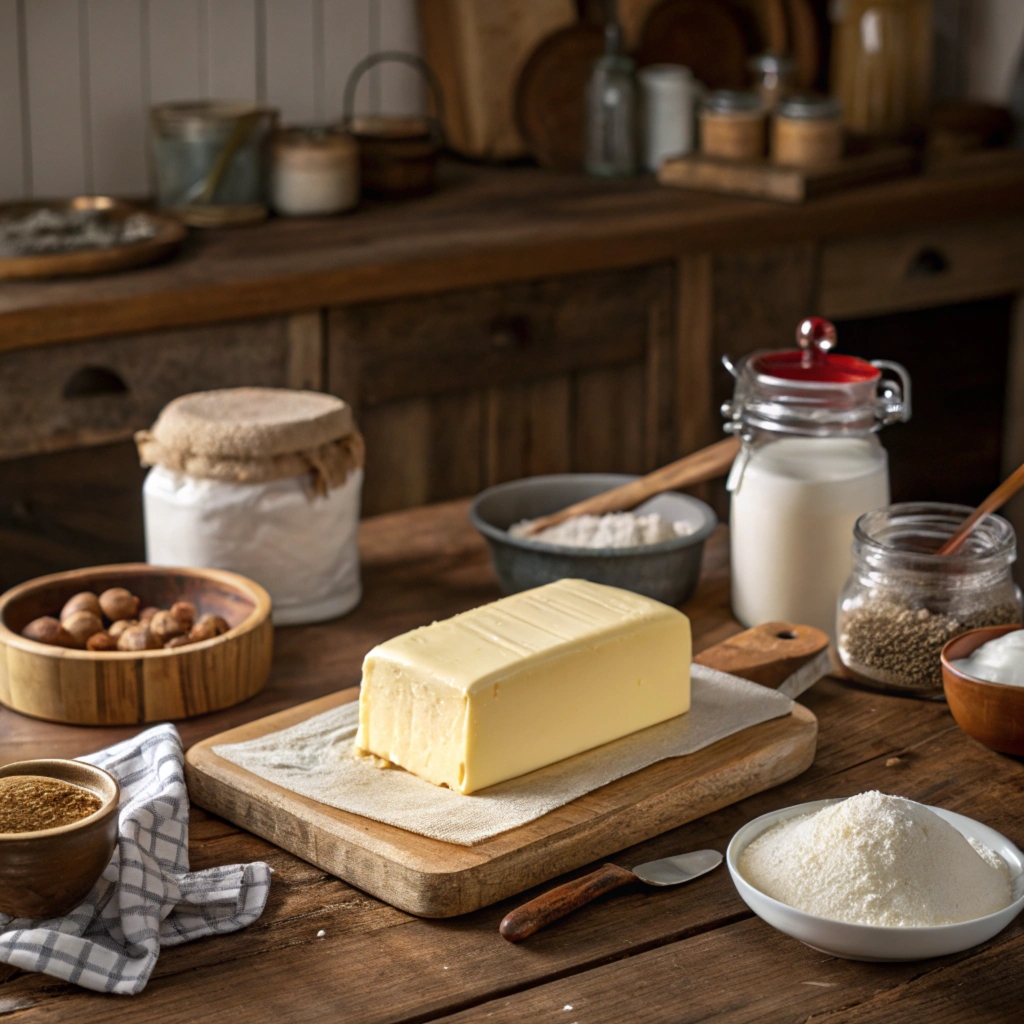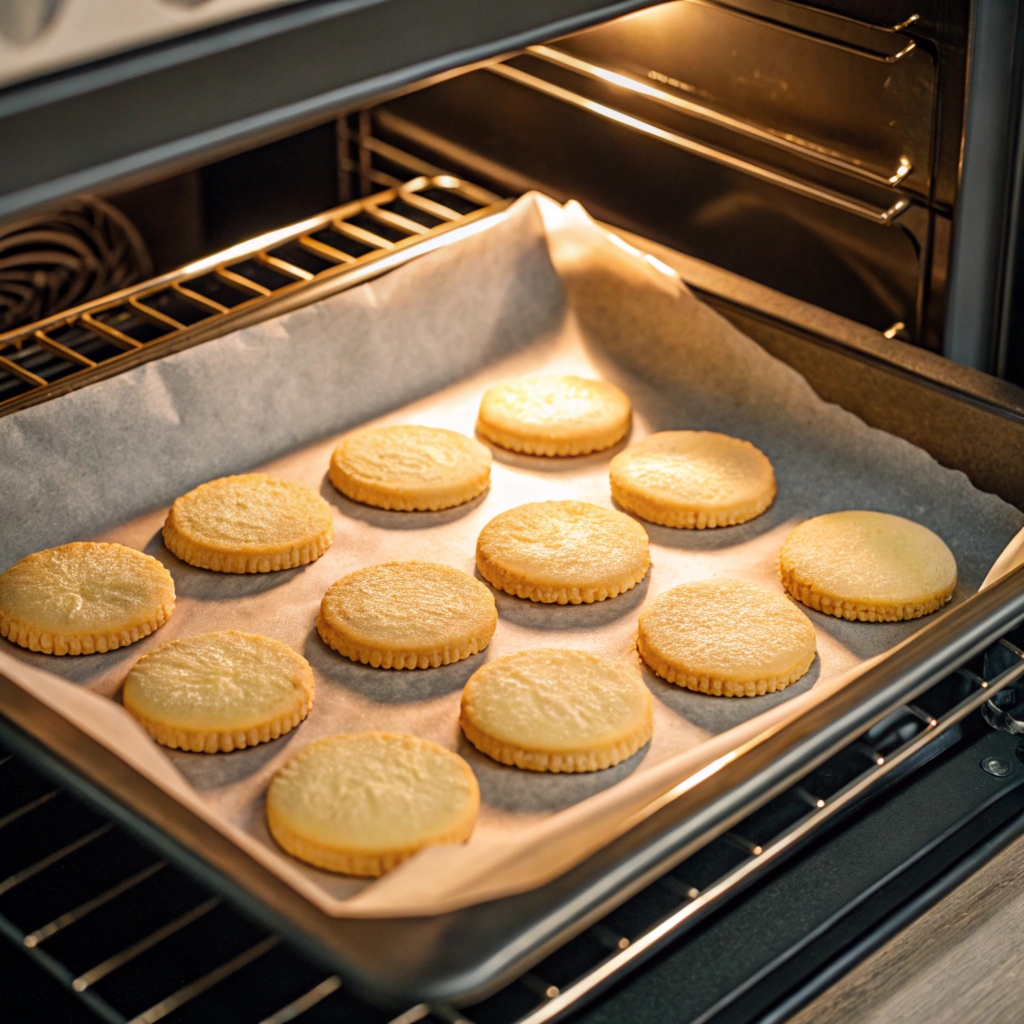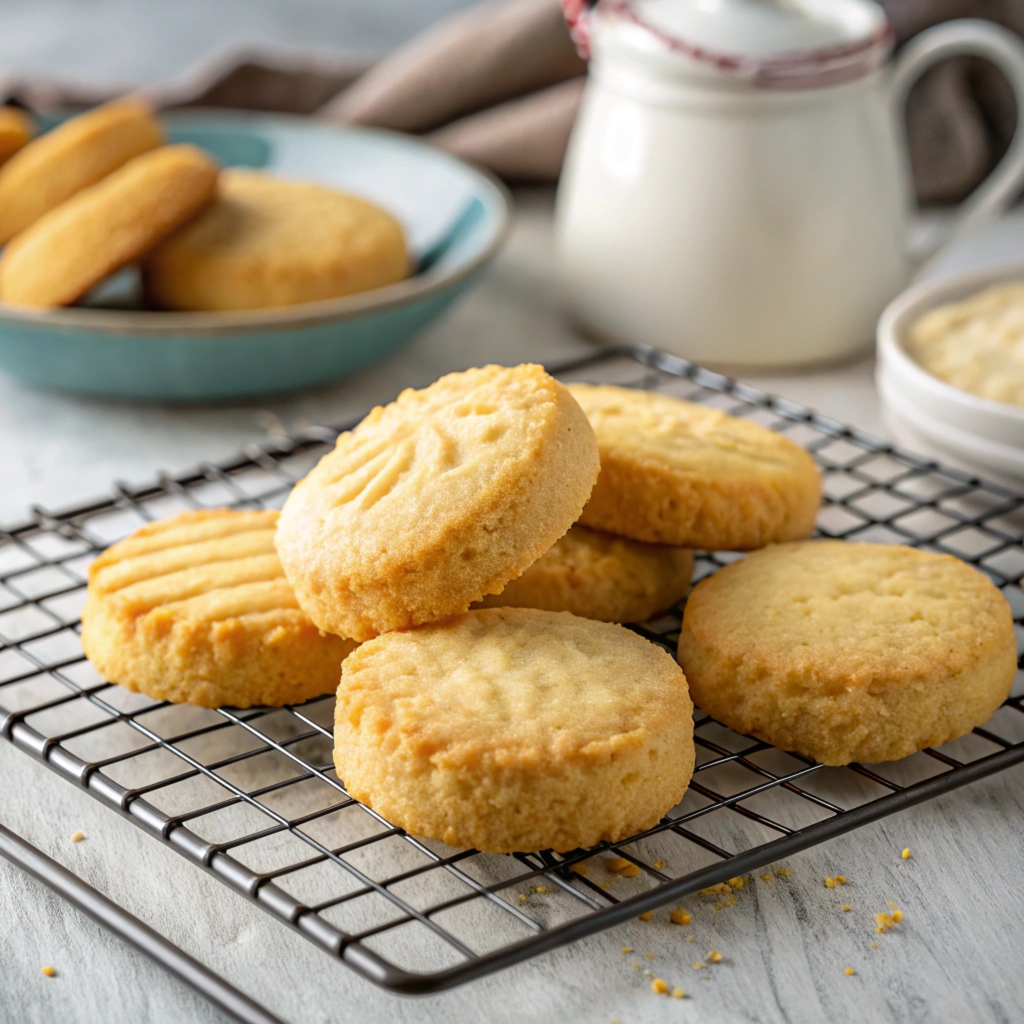What Is the Secret to Making Good Shortbread Cookies?
Shortbread cookies are a beloved treat known for their rich, buttery flavor and melt-in-your-mouth texture. With origins in Scotland, this classic confection has been cherished for centuries and remains a staple in bakeries and home kitchens worldwide. But what is the secret to make shortbread cookies so special, and what is the secret to perfecting them?
At their core, shortbread cookies are deceptively simple, relying on just three primary ingredients: butter, sugar, and flour. However, the secret to making good shortbread cookies lies in mastering technique, using high-quality ingredients, and paying close attention to detail. Even small missteps or compromises can significantly impact the final result, leaving bakers wondering where they went wrong.
This article dives into what is the secret to making good shortbread cookies, uncovering the tips and techniques needed to achieve golden-brown perfection and a signature crumbly texture. Whether you’re a seasoned baker or a novice, these insights will help you take your shortbread from good to truly exceptional.
Ready to unlock the secrets of crafting perfect shortbread cookies? Let’s delve into the essential ingredients, expert preparation methods, and creative variations that will elevate your baking skills to new heights.
The Fundamentals of Shortbread
Shortbread is a timeless cookie that relies on simplicity, precision, and high-quality ingredients. To master this classic treat, it’s essential to understand the building blocks that define it: a short list of ingredients, an iconic crumbly texture, and a rich, buttery flavor. Here’s how each component contributes to its success.
Choosing Quality Ingredients
When it comes to shortbread cookies, the quality of ingredients is paramount. With only three main components—flour, butter, and sugar—each one must shine. Using inferior or mismatched ingredients can lead to disappointing results, no matter how carefully you follow the recipe.
The Role of Butter

Butter is the heart and soul of shortbread cookies. It not only provides richness and flavor but also contributes to the cookies’ tender, crumbly texture. Here are a few tips for selecting the right butter:
Go for Unsalted Butter: Unsalted butter gives you full control over the salt content of your cookies.
Use High-Fat Butter: Premium European-style butter, which has a higher fat content, often delivers a superior taste and texture.
Let It Soften Slightly: Cold butter won’t cream well, while overly soft butter can make the dough greasy. Aim for butter that is just soft enough to press with a finger.
The Sugar Debate
The type of sugar you use can influence both the texture and sweetness of your shortbread. Here’s how to choose:
Granulated Sugar: This is the most common choice, yielding a classic shortbread with a slight crunch.
Powdered Sugar: Using powdered sugar creates a smoother, more melt-in-your-mouth texture.
Brown Sugar: Although unconventional, brown sugar introduces a caramel-like richness that adds depth, though it slightly changes the traditional flavor of shortbread.
Flour Matters
Flour is the structural backbone of shortbread cookies. All-purpose flour is the standard choice, but not all flours are created equal:
Low-Protein Flour: A flour with a lower protein content (like pastry flour) will yield a more tender cookie.
Sift for Consistency: Sifting the flour before adding it to the dough ensures a lighter, more uniform texture.
Avoid Overloading: Measuring flour accurately is crucial. Too much flour can make the cookies dense and dry.
Understanding Dough Preparation
The preparation of the dough is just as important as the quality of the ingredients. The way you mix and handle the dough can make or break your shortbread cookies.
Keeping It Simple
One of the defining characteristics of shortbread is its simplicity. Overcomplicating the process with unnecessary ingredients or steps can detract from the traditional flavor and texture. Stick to the basics and focus on mastering the classic method before experimenting with variations.
Avoiding Overworking
Over-mixing the dough can cause gluten to develop, resulting in cookies that are tough instead of tender. To avoid this:
Mix Just Until Combined: Blend the ingredients only until the dough comes together.
Handle with Care: When shaping the dough, use light hands to prevent compacting.
By understanding these foundational principles, you’re well on your way to making shortbread cookies that are a cut above the rest.
Secrets to Perfect Texture
Achieving the perfect texture is central to what is the secret to making good shortbread cookies. A great shortbread strikes the ideal balance—crumbly yet tender enough to melt in your mouth, with just the right amount of crispness. Mastering these texture-focused techniques is key to baking shortbread cookies that are truly exceptional.
The Right Proportions
The classic shortbread recipe follows a simple ratio of 3:2:1—three parts flour, two parts butter, and one part sugar. This timeless formula ensures the ideal balance of fat, sweetness, and structure. Here’s why this ratio matters:
Flour Provides Structure: Too much flour results in dense cookies, while too little makes them fall apart.
Butter Adds Tenderness: The high-fat content in butter creates a crumbly, soft texture.
Sugar Enhances Flavor and Texture: Sugar not only provides sweetness but also adds a delicate crispness to the cookies. Use this ratio as your foundation, making adjustments only when experimenting with variations.
Baking Techniques
The baking process is where shortbread cookies truly come to life. Subtle differences in temperature and timing can significantly impact the final product.

Low-Temperature Baking
Shortbread thrives in a low and slow baking environment. Here’s why:
Prevents Over-Browning: A low oven temperature (around 300°F to 325°F) ensures the cookies bake evenly without browning too much.
Retains the Buttery Flavor: High heat can cause the butter to burn or separate, altering the flavor.
Place the cookies on a parchment-lined baking sheet to prevent sticking and ensure even heat distribution.
The Importance of Chilling the Dough
Chilling the dough is a step many bakers overlook, but it’s crucial for shortbread cookies. Here’s why it matters:
Prevents Spreading: Chilled dough holds its shape better during baking.
Enhances Texture: The resting time allows the butter to solidify, which leads to a crumbly, tender texture.
Intensifies Flavor: Chilling gives the ingredients time to meld, creating a richer taste.
Refrigerate the dough for at least 30 minutes before rolling it out or cutting into shapes.
Timing Matters
Perfect timing is key to baking shortbread cookies to the right texture. Watch for these signs to know when they’re done:
Golden Edges: The edges should be lightly golden but not browned.
Firmness: The cookies should feel set but not hard when gently touched.
Smell: A fragrant buttery aroma is a good indicator they’re ready.
Remove the cookies from the oven and let them cool on the baking sheet for a few minutes before transferring them to a rack. This prevents them from crumbling while they’re still warm.
Avoiding Common Pitfalls
Even experienced bakers can face challenges with shortbread. Here are some common mistakes and how to avoid them:
Overbaking: This dries out the cookies, making them hard and brittle. Keep a close eye on the oven.
Skipping Chilling: This can lead to cookies that spread too much and lose their shape.
Over-Mixing: Develops gluten, resulting in tough cookies.
By mastering these techniques, you’ll be able to create shortbread cookies with a perfect texture every time.
Creative Variations
While traditional shortbread cookies are cherished for their simplicity, discovering what is the secret to making good shortbread cookies opens up endless possibilities for creative variations. By experimenting with flavors, shapes, and decorations, you can add a personal twist to this classic treat while maintaining its buttery essence. Here are some inspiring ideas to elevate your next batch of shortbread cookies.
Adding Flavor with Spices and Extracts
Subtle enhancements can elevate the flavor of your shortbread without overwhelming its buttery base.
Vanilla and Almond Extracts
Vanilla Extract: A classic addition that enhances the natural sweetness and buttery flavor of shortbread. Use pure vanilla extract for the best results.
Almond Extract: Adds a nutty undertone that pairs beautifully with buttery cookies. Use sparingly, as almond extract is quite potent.
Warming Spices
Introduce spices for a cozy twist:
Cinnamon: Adds a warm, comforting flavor.
Cardamom: Lends a fragrant, slightly citrusy aroma.
Nutmeg: Complements the richness of butter without overpowering.
Infused Butters
For a more adventurous take, consider infusing your butter before using it in the dough.
Herb-Infused Butter
Lavender Butter: Infuse butter with culinary lavender for a subtle floral note.
Rosemary Butter: Pairs well with savory or slightly sweet cookies.
Spiced Butter
Infuse butter with cinnamon sticks, cloves, or star anise to create a warm, spiced profile that complements the richness of shortbread.
Fun Shapes and Decorations
Shortbread cookies lend themselves well to creative presentations.
Using Cookie Cutters
Shape your shortbread into festive designs with cookie cutters:
Holiday Shapes: Stars, trees, or snowflakes for a festive touch.
Elegant Forms: Hearts, circles, or scalloped edges for a refined look.
Adding Glazes and Toppings
Chocolate Drizzle: Melt dark or white chocolate and drizzle it over cooled cookies for a decorative and flavorful addition.
Sprinkles or Sugar Crystals: Add a pop of color and crunch.
Jam-Filled Centers: Create thumbprint shortbread cookies filled with fruit preserves for a sweet, tangy contrast.
Stamping Designs
Invest in a shortbread stamp to press intricate patterns onto the surface of your cookies. These stamps are great for creating uniform, decorative designs that look professional.
Seasonal and Regional Twists
Shortbread cookies can be adapted to suit specific occasions or cultural influences.
Holiday Variations: Add peppermint extract and crushed candy canes for Christmas-themed cookies.
Regional Twists: Incorporate ingredients like matcha powder (Japan) or cardamom and saffron (Middle Eastern flavors) for a global flair.
Savory Options: Swap sugar for parmesan or cheddar, and add herbs like thyme for a savory shortbread perfect for appetizers.
By incorporating these creative variations, you can transform classic shortbread cookies into unique and personalized treats for any occasion.
What is the secret to making good shortbread cookies (FAQs)
Shortbread cookies are a seemingly simple treat, yet they often raise a host of questions for bakers. Below are answers to some of the most common queries to help you perfect your shortbread-making skills.
Why is my shortbread dough too crumbly?
Shortbread dough can become overly crumbly if there isn’t enough butter to bind the flour and sugar together. Other common reasons include:
Using Cold Butter: Butter that’s too firm doesn’t incorporate well into the dough. Ensure it’s softened but not melted.
Inaccurate Measurements: Too much flour can dry out the dough. Measure your ingredients accurately using a kitchen scale for the best results.
If your dough is too crumbly, add a tablespoon of softened butter at a time until it comes together.
How do I prevent my shortbread cookies from spreading?
Cookies that spread too much during baking often indicate an issue with the dough or baking process. Here’s how to prevent this:
Chill the Dough: Refrigerating the dough for at least 30 minutes helps it firm up, reducing spread during baking.
Use the Right Butter: Avoid overly soft butter; it should be slightly firm but pliable.
Control Oven Temperature: Ensure your oven is properly preheated and maintains a consistent low temperature (300°F to 325°F).
Can I make shortbread cookies without a mixer?
Yes, shortbread cookies can be made without a mixer. In fact, many traditional recipes rely on hand-mixing to prevent overworking the dough. Use a wooden spoon or pastry cutter to blend the ingredients until the dough just comes together.
How do I know when my shortbread cookies are done?
Shortbread cookies don’t change much in color, so visual cues can be subtle. They’re ready when:
The edges are lightly golden.
The surface appears dry and slightly firm.
You smell a fragrant buttery aroma.
Avoid overbaking, as this can make the cookies hard and dry.
Can I freeze shortbread dough?
Yes, shortbread dough freezes exceptionally well, making it a great option for advance preparation. To freeze:
Roll the Dough: Shape the dough into a log or disc and wrap it tightly in plastic wrap.
Label and Store: Place it in a freezer-safe bag or container, labeled with the date.
Thaw Properly: Let the dough thaw in the refrigerator before rolling or cutting it.
Frozen shortbread dough can last up to three months in the freezer.
Why does my shortbread taste bland?
Shortbread cookies owe their deliciousness to the quality of their ingredients. If your cookies lack flavor, it’s important to assess a few key factors:
- Butter Quality: The richness of shortbread cookies comes from butter. Using low-quality butter can result in bland cookies, so opt for premium, high-fat varieties for a superior taste.
- Salt Balance: Even though shortbread is a sweet treat, a pinch of salt is crucial for enhancing and balancing the flavors.
- Flavor Additions: To take your cookies to the next level, try adding vanilla extract, almond extract, or warming spices like cinnamon or nutmeg.
With attention to these details, you’ll be well on your way to crafting delicious shortbread cookies.
Conclusion
Mastering the art of making good shortbread cookies lies in embracing simplicity while paying attention to detail. Understanding what is the secret to making good shortbread cookies is essential to achieving their buttery richness and melt-in-your-mouth texture. This timeless treat depends on just a few high-quality ingredients and precise techniques to shine.
By selecting premium butter, sugar, and flour, and chilling your dough, you lay the groundwork for success. Mindful baking techniques—such as using a low oven temperature, avoiding over-mixing, and perfecting your timing—are the true secrets to making good shortbread cookies with the ideal crumbly yet tender texture.
For those looking to put a personal spin on this classic cookie, creative variations like infused butters, fun shapes, and flavor enhancements can add an extra layer of enjoyment to your baking experience. Whether you prefer your shortbread traditional or with a modern twist, knowing what is the secret to making good shortbread cookies gives you the confidence to experiment with delightful results.
Now that you’re familiar with the secrets to making exceptional shortbread cookies, it’s time to put them into practice. With attention to detail and patience, you’ll soon bake cookies that not only delight your taste buds but also showcase your understanding of what makes good shortbread cookies truly outstanding.
Enjoy the process, and happy baking!

